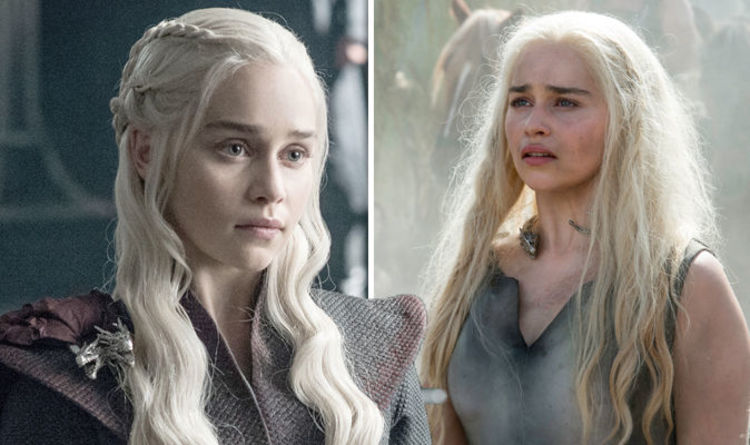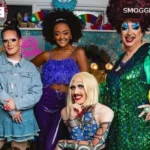Blog Post
How Game of Thrones sensationalized sexual violence with the permission of viewers
By Jonathon Van Maren
A couple of years ago, actress Emilia Clarke came forward to reveal how she and others had been exploited on the set of Game of Thrones. Those graphic nude and rape scenes that looked so brutal apparently were brutal, and both she and her co-star sobbed through the first sexual assault scene that was enjoyed by so much of the audience. Clarke drank vodka to get through many of the scenes while young men enjoyed the porn interspersed through the fantasy series. The show featured 82 nude scenes in the first 67 episodes but was still plugged breathlessly by conservative commentators such as David French, Ben Shapiro, and Lauren Chen.
I bring this up because Sophie Gilbert had an interesting essay recently in The Atlantic titled “What the Sexual Violence of Game of Thrones Begot,” detailing the impact of the ground-breaking show on the entertainment landscape. When she summarizes the graphic rape scenes of just the first few episodes (including the very first episode), I’m reminded again of how indefensible this series was:
I don’t have much tolerance these days for scenes involving the casual, ritualistic degradation of women, which is why deciding to rewatch Game of Thrones was such a colossal unforced error…I made it through the first episode, where a sobbing Daenerys Targaryen is raped by Khal Drogo on their wedding night in front of a romantic orange sunset. I got through the part where Daenerys learns to get her rapist to be nicer to her by being more of an engaged participant in her own sexual assault, and the moment where she subsequently falls in love with him and he with her. I watched as Ros is forced to violently beat another woman with a scepter to gratify the sadistic sexual predilections of King Joffrey, and as Brienne is dragged away to be gang-raped by Roose Bolton’s soldiers, until Jaime saves her. I stopped watching shortly before Jaime rapes his sister, Cersei, next to their son’s dead body, and before Sansa is raped by Ramsay Bolton while Theon Greyjoy watches…
Game of Thrones, which debuted 10 years ago this spring, has the dubious honor of being the ne plus ultra of rape culture on television. No series before, or since, has so flagrantly served up rape and assault simply for kicks, without a shadow of a nod toward “realism” (because dragons). The genre is fantasy, and the fantasy at hand is a world in which every woman, no matter her power or fortune, is likely to be violated in front of our eyes. Rape is like blood on Game of Thrones, so commonplace that viewers become inured to it, necessitating ever more excess to grab our attention. It’s brutal, graphic, and hollow. It’s also intentional. Daenerys’s wedding night isn’t explicitly written as being nonconsensual in George R. R. Martin’s 1996 novel (despite the fact that the character was 13 at the time), and it wasn’t filmed as such in the first, unreleased Game of Thrones pilot. At some point, the decision was made to introduce viewers to the series’s most significant female character via her humiliating assault—with pornified aesthetics for added titillation—by a man who had purchased her.
Listing these instances has a way of making the show seem horrifying, doesn’t it? Plenty of folks who disliked these scenes just hurried on to the next episode, ignoring the fact that this was the graphic glorification of rape designed to be titillating to the audience. What Gilbert does not discuss is the fact that the majority of people now regularly consume digital pornography, and the majority of pornography now features violence and degradation against women. Game of Thrones—and many shows that followed it—are merely featuring the sort of material that people are watching regularly on Pornhub or Xhamster with high production value, talented writing, and intricate storylines. This, of course, also allows many people to justify watching women get abused over and over and over again without wondering: Should I really be participating in this by watching it?
Most people wouldn’t admit it, but in many instances Game of Thrones tried to make sexual assault sexy. The directors and producers pushed the envelope to see how much people would tolerate, and it turns out that people would tolerate pretty much anything. Sure, part of this was that people wanted to “find out what happens.” But the sexual violence started in the very first episode, so pleading ignorance doesn’t work here. An underlying reality is that a pornified population is increasingly incapable of being horrified by sexual violence because they consume so much pornography online. After all, the Fifty Shades of Gray Trilogy, which persuaded a generation of teenage girls that sexual violence could be romantic, was released on Valentine’s Day.
Even A Handmaid’s Tale, which was supposed to be a feminist morality tale, couldn’t help getting in on the game, featuring rape and sexual assault to such an extent that it is impossible not to include that horrifying the audience was no longer the point. Gilbert agreed:
The second season made clear that its only objective was to keep people watching. The violence the show inflicts upon its characters delivers no overarching message, no moment of transcendence. In Gilead, sexual violence is a categorical imperative, and June and her allies are beaten and raped and tortured until they escape; when they’re inevitably recaptured they are beaten and raped and tortured again. Unlike Margaret Atwood’s 1985 novel, on which the series is based and in which June’s “ceremony” with the Commander is described in clinical, disassociated language, the sexual violence of the show is cruel and up-close. Your tolerance for it depends on you. In one scene in the new season, June is waterboarded while Aunt Lydia uneasily does needlepoint in the hallway outside, and it occurred to me that viewers are essentially adopting Lydia’s role, spectators tacitly encouraging the characters’ prolonged abuse, uncomfortable but silent. Meanwhile the show’s writers, not content with tormenting June, are increasingly portraying her as a problematic antihero, encouraging viewers to condemn her for being emotionally and psychologically undone for everything they’ve put her through.
The cruelty, as they say, is the point. Filmmakers are claiming to be exposing abuse while actually portraying it to arouse the audience. After all, they know much of their audience views this sort of thing on porn sites almost daily. Gilbert ends her essay with a call to stop watching shows that “treat sexual assault cheaply.” She’s right, of course—and she doesn’t go far enough. But I’m not optimistic. Even many Christians wouldn’t stop watching Game of Thrones, and many people got angry if you questioned their entertainment choices, like a possum crouching in a dumpster and protecting his garbage with bared teeth and snarls.
Feminist scholars have defined a rape culture as one that promotes or trivializes sexual assault. By that definition, the entertainment industry had joined the porn industry in promoting rape culture. A culture in which people sit down to enjoy watching women get abused on-screen through pornography or their favorite TV shows (and it is increasingly hard to tell the difference as GOT hired porn stars to do nude scenes and Pornhub uploaded hardcore clips from the show directly to their site) is a culture that is trivializing sexual assault. Worse, it is sensationalizing it. It is sick, and it must stop.









I totally agree- I only watched G O T for the intrigueing storyline and for my favourite characters in the vain hope good would overcome evil but found it way over the top with the violence and rape scenes – I actually got through every season but the second last and last as I came to a conscious decision that this was very wrong- I had fast forward all the most violent and offensive scenes but there were just SO many – I sincerely believe they could have made this show without being so explicit and to think the people involved in sharing this with the masses to desensitize them and made so much profit from it greatly disturbs and infuriates me : (